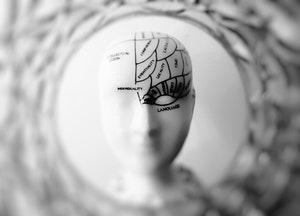|
This is a guest post from the website professionaltradingsystems.com
|
In this post I am going to share with you the different mind sets which I have during creation, optimization and live trading of an algorithmic trading system. I will reveal what my thoughts are and what my focus is during the different stages of the strategy life. I think the mental process is what ultimately determines the outcome and not allowing yourself to fall into your mind’s trap will be very time and money saving. There are mainly three distinguished phrases of an automated system – creation of the rules, optimization or choosing the right inputs and then the live trading. Each comes with a different mindset. So, lets begin with the first stage.
Creation of the trading rules
When I am beginning to create an algo trading system I am focusing on long-term results. I’d like to create something which will be profitable at least 5 years in the future. Usually my time span is much bigger. I don’t want to trade a system which is prone to fail during the next 1-2 years because it’s created around a very unique market model which is difficult to be reproduced in the future. This desire leads me to focusing on simple systems with as few inputs (degrees of freedom) as possible. The only long-term successful systems out there that I know of are not complicated at all. Mostly they are simple with just one indicator for the entry and a simple trailing stop as an exit.
Simple systems are not so vulnerable to over fitting. Since they have a few inputs, it is difficult to create a set of settings that are perfect for past trading conditions only because you are focusing on a basic market model which is general enough that many future market junctures will fail into it.
If the initial backtesting results are not good my thinking is to not fool myself, stay as objective as possible and to not add any filters or other inputs which will make the system complicated. I just say to myself that this particular market model doesn’t fit to my desire of simplicity and thus it is not worth continuing to develop it. Being stubborn and persistent at this stage is counterproductive.
Optimizing the system
During this stage my mental focus is to choose the inputs which are most likely to be reproduced in the future. I am always thinking – “Are the chosen settings going to work in the distant future?“. In order to maximize the chances I rarely choose the optimum or the best inputs which have given the highest profits in the past. Let me give you two examples.
First, if according to the optimization I see that the best setting for my moving average trailing stop’s period is 20, then I would choose 24. Why? Because 20 is the best for the past data and I’d like to give a leeway to the market. So I am widening the stop with 20% which gives me more changes of future success. The same logic I apply if my entry is based on overbought/oversold RSI conditions. If the best result is achieved with RSI=6, then I would choose RSI=5 during the real trading. Because it is more likely in the future for RSI=5 to give more trades and thus the chances of missing a big winner are diminished.
On both occasions if the system is robust enough deviating from the best back tested results won’t cause any deterioration of the equity curve which leads me to the next mind set – stress test my system a lot and only if the results remain stable then it is a real candidate for future profits. It is done by changing all the inputs a lot – like 200% and then observing whether the results remain profitable. If yes, then the system is stable and robust. If no, then I don’t want to remain delusional and put my real money into something which is like a thin ice. This test will eliminate a lot of my potential trading systems which is hard to accept because I have put a lot of work only to see it is not going to work. I like to be as hard on myself and my systems as possible which will be beneficial during the next step – real trading.
Real trading
At this stage I try to be as disciplined as possible. I define a trading mistake as “not following my trading strategy”. So during drawdowns or very profitable times I am focusing on just rigorously following my strategy rules. I often remind myself that I have done the preparation work and now the only thing is to allow my system to show its performance. This requires focusing on long-term results and not getting worried about short-term outcomes like form the last few trades. I know that the results will be positive after 100 or more trades. Patience makes the difference here.
The second thing during live trading which gives me confidence is that I have an exit plan. If the system is not working well, I am just not going to continue trading it. This plan is conservative enough to allow the natural drawdowns of the strategy to occur. It is all predetermined before the real trading so it is not a decision I would make emotionally during the real events and thus I am not prone to making a mistake. It is well thought-out.
As a conclusion I would say that every stage of the development and trading of a trading system requires a different mindset which is helpful for better live results that ultimately count. The best thing a trader could do to is not trying to fool himself with excellent back test results which are not replicable in the future. I wish you a profitable trading.
|
You can check out the website at professionaltradingsystems.com
|
